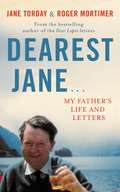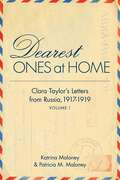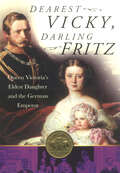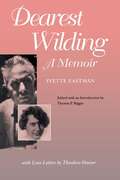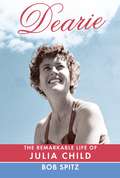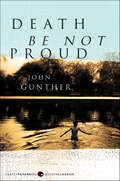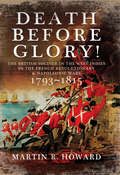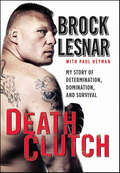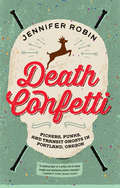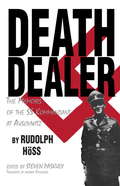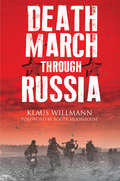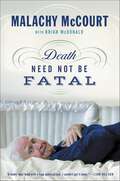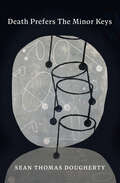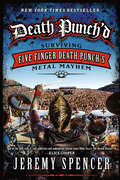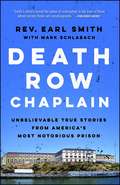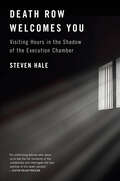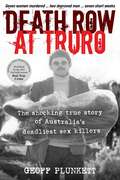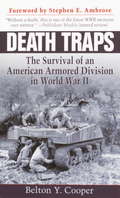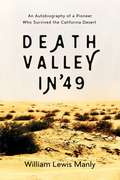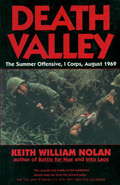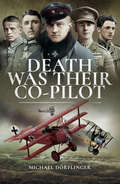- Table View
- List View
Dearest Friend: A Life of Abigail Adams
by Lynne WitheyThe lively, authoritative, New York Times bestselling biography of Abigail Adams.This is the life of Abigail Adams, wife of patriot John Adams, who became the most influential woman in Revolutionary America. Rich with excerpts from her personal letters, Dearest Friend captures the public and private sides of this fascinating woman, who was both an advocate of slave emancipation and a burgeoning feminist, urging her husband to “Remember the Ladies” as he framed the laws of their new country. John and Abigail Adams married for love. While John traveled in America and abroad to help forge a new nation, Abigail remained at home, raising four children, managing their estate, and writing letters to her beloved husband. Chronicling their remarkable fifty-four-year marriage, her blossoming feminism, her battles with loneliness, and her friendships with Thomas Jefferson and James Madison, Dearest Friend paints a portrait of Abigail Adams as an intelligent, resourceful, and outspoken woman.
Dearest Jane...: My Father's Life and Letters
by Jane Torday Roger MortimerAs the eldest daughter of a prolific letter writer, Jane Torday received hundreds of letters from her father over the years. From irreverent advice and hilarious family anecdotes to moments of great poignancy, Roger Mortimer`s missives are a touching and witty portrait of his life and relationships over the years.Dearest Jane begins with Roger?s time as a young army officer in Egypt, and then as a POW in the Second World War, where his sense of humour endured despite the conditions. Jane accompanies her father?s letters with her own memories and anecdotes, as we meet familiar characters such as Nidnod, Lupin and Lumpy, and learn more about the extended family, friends and pets who leap from the pages of his letters. This is an arresting and extraordinary record, not only of Roger Mortimer?s life but also of the history of an entire family between 1960 and 1991. Sparkling with the dry wit for which Mortimer?s letters are famous, and accompanied by an affectionate personal portrait, this book will delight both old and new readers.
Dearest Jane...: My Father's Life and Letters
by Jane Torday Roger MortimerAs the eldest daughter of a prolific letter writer, Jane Torday received hundreds of letters from her father over the years. From irreverent advice and hilarious family anecdotes to moments of great poignancy, Roger Mortimer‘s missives are a touching and witty portrait of his life and relationships over the years.Dearest Jane begins with Roger’s time as a young army officer in Egypt, and then as a POW in the Second World War, where his sense of humour endured despite the conditions. Jane accompanies her father’s letters with her own memories and anecdotes, as we meet familiar characters such as Nidnod, Lupin and Lumpy, and learn more about the extended family, friends and pets who leap from the pages of his letters. This is an arresting and extraordinary record, not only of Roger Mortimer’s life but also of the history of an entire family between 1960 and 1991. Sparkling with the dry wit for which Mortimer’s letters are famous, and accompanied by an affectionate personal portrait, this book will delight both old and new readers.
Dearest Ones At Home: Clara Taylor's Letters from Russia, 1917-1919
by Katrina Maloney Patricia M. MaloneyOn November 5, 1917, Taylorville, Illinois native Clara Taylor stepped off a Trans-Siberian Railway train into a city then called Petrograd, Russia. Employed by the YWCA as an industrial expert, Clara had been sent to Russia to help establish Associations in Petrograd (now St. Petersburg) and Moscow. Her main charge while in Russia was to survey and report on factory conditions, but Clara only spent a fraction of her stay in Russia visiting factories; due to the vagaries of the political, social, and economic revolution—the upheaval of an entire culture—Clara and her colleagues spent most of their first year in Russia teaching English, home economics, book keeping, literature, and basketball, and sponsoring lectures, dances and sing-alongs for Russian working women. Clara&’s letters, collected in this book, tell of both the mundane and the extraordinary: what the YW staff ate for dinner; how the Bolshevik suppression of free speech impacted Americans&’ ability to communicate with those at home; shootings in the streets; bartering for pounds of sugar; conversing with nobility, with intellectuals, and with workers; attending the opera; and sight-seeing at monasteries. Together, Clara&’s letters to her family—her &“dearest ones at home&”—tell a compelling story of one American woman&’s experiences in Revolutionary Russia.
Dearest Vicky, Darling Fritz: Queen Victoria's Eldest Daughter and the German Emperor
by John Van der KisteThis work tells the love story of the royal couple against the changing background of 19th-century Germany. It looks at the differing political sympathies of the couple, revealed through letters, and re-examines the prevailing view that the domineering Vicky never bothered to conceal her distaste for everything Prussian and flaunting her sense of British superiority. In many ways ahead of her time, she was something of a pioneer feminist, refusing to accept the oft-accepted maxim that women were second-class citizens. Insufficient consideration has been given to her health and the possibility that her judgement and reason may sometimes have been affected, albeit mildly, by the family's inheritance of porphyria that led to the 'madness' of her great-grandfather George III.
Dearest Wilding
by Thomas P. Riggio Yvette EastmanA candid and intimate chapter in the life of a modern woman, Yvette Eastman's vivid narrative also contributes richly to the life story of Theodore Dreiser. Dearest Wilding: A Memoir records the journey that took Yvette Szekely from an upper-middle-class scholar's home in Budapest to the intellectual and artistic centers of urban America in the 1920s and 1930s.In 1929 sixteen-year-old Yvette Szekely met Dreiser, who was fifty-eight at the time, and within a year he became her lover. Dreiser remained central to her life--as lover, father figure, and mentor--until his death in 1945. Her portrait of Dreiser, who is by no means idealized, is of a complex man--often troubled, suspicious, and jealous, but also caring and supportive.The book is much more than an account of a sixteen-year relationship, however. It describes Eastman's attempt to understand her bond with Dreiser, forcing her back to her childhood, to memories of her distinguished but distant father who remained in Hungary, and to the early experiences that made the aging Dreiser so important to her life. In an afterword, the author thoughtfully reflects on the patterns of love and loss that form part of her past.Dearest Wilding is a valuable primary source in literary history and among the last documents from this era. One of the most important figures in the memoir is Max Eastman, whose early relationship with Yvette Szekely resulted in marriage years later.As perhaps the last reminiscence of Dreiser and his circle that will ever appear, Dearest Wilding: A Memoir promises rewarding reading.
Dearie: The Remarkable Life of Julia Child
by Bob SpitzIt's rare for someone to emerge in America who can change our attitudes, our beliefs, and our very culture. It's even rarer when that someone is a middle-aged, six-foot three-inch woman whose first exposure to an unsuspecting public is cooking an omelet on a hot plate on a local TV station. And yet, that's exactly what Julia Child did. The warble-voiced doyenne of television cookery became an iconic cult figure and joyous rule-breaker as she touched off the food revolution that has gripped America for more than fifty years. Now, in Bob Spitz's definitive, wonderfully affectionate biography, the Julia we know and love comes vividly -- and surprisingly -- to life. In Dearie, Spitz employs the same skill he brought to his best-selling, critically acclaimed book The Beatles, providing a clear-eyed portrait of one of the most fascinating and influential Americans of our time -- a woman known to all, yet known by only a few.At its heart, Dearie is a story about a woman's search for her own unique expression. Julia Child was a directionless, gawky young woman who ran off halfway around the world to join a spy agency during World War II. She eventually settled in Paris, where she learned to cook and collaborated on the writing of what would become Mastering the Art of French Cooking, a book that changed the food culture of America. She was already fifty when The French Chef went on the air -- at a time in our history when women weren't making those leaps. Julia became the first educational TV star, virtually launching PBS as we know it today; her marriage to Paul Child formed a decades-long love story that was romantic, touching, and quite extraordinary. A fearless, ambitious, supremely confident woman, Julia took on all the pretensions that embellished tony French cuisine and fricasseed them to a fare-thee-well, paving the way for everything that has happened since in American cooking, from TV dinners and Big Macs to sea urchin foam and the Food Channel. Julia Child's story, however, is more than the tale of a talented woman and her sumptuous craft. It is also a saga of America's coming of age and growing sophistication, from the Depression Era to the turbulent sixties and the excesses of the eighties to the greening of the American kitchen. Julia had an effect on and was equally affected by the baby boom, the sexual revolution, and the start of the women's liberation movement. On the centenary of her birth, Julia finally gets the biography she richly deserves. An in-depth, intimate narrative, full of fresh information and insights, Dearie is an entertaining, all-out adventure story of one of our most fascinating and beloved figures.From the Hardcover edition.
Death Be Not Proud
by John J. Gunther"If courage is the antidote to pain and grief, the disease and the cure are both in this book. . . . A story of great unselfishness and great heroism." —New York TimesJohnny Gunther was only seventeen years old when he died of a brain tumor. During the months of his illness, everyone near him was unforgettably impressed by his level-headed courage, his wit and quiet friendliness, and, above all, his unfaltering patience through times of despair. This deeply moving book is a father's memoir of a brave, intelligent, and spirited boy.
Death Before Glory!: The British Soldier in the West Indies in the French Revolutionary and Napoleonic Wars 1793–1815
by Martin R. HowardDeath Before Glory! is a highly readable, thoroughly researched and comprehensive study of the British army's campaigns in the West Indies during the French Revolutionary and Napoleonic period and of the extraordinary experiences of the soldiers who served there. Rich in sugar, cotton, coffee and slaves, the region was a key to British prosperity and it was perhaps even more important to her greatest enemy France. Yet, until now, the history of this vital theatre of the Napoleonic Wars has been seriously neglected. Not only does Martin Howard describe, in graphic detail, the entirety of the British campaigns in the region between 1793 and 1815, he also focuses on the human experience of the men the climate and living conditions, the rations and diet, military discipline and training, the treatment of the wounded and the impact of disease. Martin Howard's thoroughgoing and original work is the essential account of this fascinating but often overlooked aspect of the history of the British army and the Napoleonic Wars.
Death Clutch: My Story of Determination, Domination, and Survival
by Paul Heyman Brock LesnarThe “baddest man on the planet,” undisputed, three-time WWE Champion and current UFC World Heavyweight Champion, Brock Lesner, shares his true personal story of determination, domination, and survival in Death Clutch. A raw, no-holds-barred memoir from one of the most popular—and polarizing—figures in sports entertainment and professional mixed martial arts, Death Clutch is an essential volume for every WWE and Ultimate Fighting fan.
Death Confetti: Pickers, Punks, and Transit Ghosts in Portland, Oregon
by Jennifer RobinWith savage humor, Death Confetti features performance artist Jennifer Robin's autobiographical sketches of Portland, Oregon, from the grunge-era obscurity of the '90s to its current media-darling status.As an only child raised by reclusive grandparents in upstate New York, Jennifer recalls that she felt "anemic for the real." At seventeen she broke loose and made her way to the west coast."Civilization is a nightmare-illusion," Jennifer writes, "a three-dimensional spreadsheet perpetuated by machines that hypnotize meat."In a city that's stranger than fiction, grocery-store checkers and meth-heads loom as lost gods. We're introduced to the lady tweaker "Chew Toy," who wears moon boots and sings hair metal songs all night as she collects recyclable bottles. Jennifer visits a bar where executives simulate doggie-style sex acts on the dance floor. Then there's all the tales of late-night life on the city's buses and light rail.Jennifer reflects on her early terror in Catholic school and phone calls with her far-out mother, who disclosed that her gynecologist was a murderer. In the all-too-true pages of Death Confetti, Robin remembers her life among noise musicians, junkies, and her escape from a boyfriend who insisted on reviving the lives of hundreds of deceased fruit flies.Death Confetti jolts the senses, and lingers like a mosquito bite to the Portland of everybody's soul.
Death Dealer: the Memoirs of the SS Kommandant at Auschwitz
by Steven Paskuly Rudolf HossBy his own admission, SS Kommandant Rudolf Höss was history's greatest mass murderer, having personally supervised the extermination of approximately two million people, mostly Jews, at the death camp in Auschwitz, Poland. Death Dealer is the first complete translation of Höss' memoirs into English.These bone-chilling memoirs were written between October 1946 and April 1947. At the suggestion of Professor Sanislaw Batawia, a psychologist, and Professor Jan Shen, the prosecuting attorney for the Polish War Crimes Commission in Warsaw, Höss wrote a lengthy and detailed description of how the camp developed, his impressions of the various personalities with whom he dealt, and even the extermination of millions in the gas chambers. This written testimony is perhaps the most important document attesting to the Holocaust, because it is the only candid, detailed, and (for the most part) honest description of the Final Solution from a high-ranking SS officer intimately involved in carrying out the plans of Hitler and Himmler.With the cold objectivity of a common hit-man, Höss chronicles the discovery of the most effective poison gas, and the technical obstacles that often thwarted his aim to kill as efficiently as possible. Staring at the horror without reacting, Höss allowed conditions at Auschwitz to reduce human beings to walking skeletons - then he labelled them as subhumans fit only to die. Readers will witness Höss's shallow rationalizations as he tries to balance his deeds with his increasingly disturbed, yet always ineffectual, conscience.
Death March Through Russia: The Memoir Of Lothar Herrmann
by Klaus WillmannThis World War II memoir by a Nazi soldier details his unimaginable experience as a German prisoner-of-war in the Soviet Union. Lothar Hermann grew up in Bavaria, going through the RAD (Nazi Labor Service) before being conscripted into a Wehrmacht Mountain Division (the Gebirgsdivision) in 1940. He participated in Germany&’s advance through southern Ukraine in 1941 and, in 1944, was arrested in Romania while retreating to Germany. The Romanians passed him onto the Soviets, who placed him in a forced labor camp, where he watched two-thirds of prisoners around him die. In 1949, Herrmann was finally released to Germany and returned to Bavaria. Three million German troops were taken prisoner by the Red Army and around two-thirds of them survived to return to Germany in 1949 like Hermann, but their stories are little known. Klaus Willmann draws on interviews he conducted with Herrmann, to recount these astonishing recollections in the first-person. Depicting the challenges of growing up in Nazi Bavaria to becoming a Soviet prisoner-of-war, this is a gripping and enlightening account from a necessary but rarely explored perspective.
Death March Through Russia: The Memoir Of Lothar Herrmann
by Klaus WillmannThis World War II memoir by a Nazi soldier details his unimaginable experience as a German prisoner-of-war in the Soviet Union. Lothar Hermann grew up in Bavaria, going through the RAD (Nazi Labor Service) before being conscripted into a Wehrmacht Mountain Division (the Gebirgsdivision) in 1940. He participated in Germany&’s advance through southern Ukraine in 1941 and, in 1944, was arrested in Romania while retreating to Germany. The Romanians passed him onto the Soviets, who placed him in a forced labor camp, where he watched two-thirds of prisoners around him die. In 1949, Herrmann was finally released to Germany and returned to Bavaria. Three million German troops were taken prisoner by the Red Army and around two-thirds of them survived to return to Germany in 1949 like Hermann, but their stories are little known. Klaus Willmann draws on interviews he conducted with Herrmann, to recount these astonishing recollections in the first-person. Depicting the challenges of growing up in Nazi Bavaria to becoming a Soviet prisoner-of-war, this is a gripping and enlightening account from a necessary but rarely explored perspective.
Death Need Not Be Fatal
by Malachy McCourt Brian McDonaldBefore he runs out of time, Irish bon vivant Malachy McCourt shares his views on death - sometimes hilarious and often poignant - and on what will or won't happen after his last breath is drawn.During the course of his life, Malachy McCourt practically invented the single's bar; was a pioneer in talk radio, a soap opera star, a best-selling author; a gold smuggler, a political activist, and a candidate for governor of the state of New York. It seems that the only two things he hasn't done are stick his head into a lion's mouth and die. Since he is allergic to cats, he decided to write about the great hereafter and answer the question on most minds: What's so great about it anyhow? In Death Need Not Be Fatal, McCourt also trains a sober eye on the tragedies that have shaped his life: the deaths of his sister and twin brothers; the real story behind Angela's famous ashes; and a poignant account of the death of the man who left his mother, brothers, and him to nearly die in squalor. McCourt writes with deep emotion of the staggering losses of all three of his brothers, Frank, Mike, and Alphie. In his inimitable way, McCourt takes the grim reaper by the lapels and shakes the truth out of him. As he rides the final blocks on his Rascal scooter, he looks too at the prospect of his own demise with emotional clarity and insight. In this beautifully rendered memoir, McCourt shows us how to live life to its fullest, how to grow old without acting old, and how to die without regret.
Death Prefers the Minor Keys
by Sean Thomas DoughertyIn his twentieth book, most of which was first composed on the backs of medical forms while on break as a third-shift medical technician, Sean Thomas Dougherty brings us a memoir-like prose sequence reflecting on disability, chronic illness, addiction, survival, love, and parenthood. In Death Prefers the Minor Keys, Dougherty offers the reader collaged prose poems, stories and essays full of dreams, metaphors, aphorisms, parables and narratives of his work as a caregiver. Moving portraits of Dougherty’s residents, a series of letters to Death, invocations of Jewish ancestry through the photography of Roman Vishniac, imaginary treatments for brain injuries, and half translated short stories of lives both real and imagined populate this collection. Through these, Dougherty engages issues of labor, the ontology of disability, and the mysticism of life. Death Prefers the Minor Keys is most of all a kind of love letter to Dougherty’s wife, and her courage and complicity in the face of long-term illness and addiction. Ultimately, we see how the antidote to despair can reside in daily acts of caring for other human beings.
Death Punch'd: Surviving Five Finger Death Punch's Metal Mayhem
by Jeremy SpencerA fascinating inside account of one of the most successful heavy metal bands of the past decade and a revealing personal journey through the wild highs and terrifying lows of rock 'n' roll from the cofounder of Five Finger Death Punch, Jeremy Spencer"Everything, including success, comes with a price."Hailed by the New York Times as "one of the most unexpectedly consistently popular bands," Five Finger Death Punch has become the heavyweight champ of the metal scene. In this soulful, inspiring, and entertaining memoir, Jeremy Spencer, the band's cofounder and drummer, takes us behind the scenes, on tour, and into the studio to tell the band's raucous story and his own.Death Punch'd is a detailed in-depth account of the group's origins and influences. With fierce honesty and self-deprecating playfulness, Jeremy details cutting the band's first demo and hitting the road to tour the world, providing snapshots of a life fueled by sex, booze, drugs, and a thrashing metal sound. He also reveals the fighting and tensions among highly opinionated musicians that grew increasingly out of control—battles that created both intense drama and the music fans love.In addition to pulling back the curtain on the band, Death Punch'd tells Jeremy's personal hard-charging, laugh-out-loud tale of how he left small-town Indiana with $150 in his pocket and rose to rock royalty—and how he nearly destroyed it all for a good time. Jeremy takes us back to his childhood in the eighties, introduces us to his down-to-earth family, and recalls adolescent exploits and a journey to addiction that landed him in rehab at sixteen—dangerous behavior that became bigger, bolder, and badder until Jeremy bottomed out before it was too late.Told in his unique, darkly humorous voice, filled with Jeremy's twisted take on how his rock 'n' roll dream turned nightmare, and including dozens of photos, Death Punch'd is a lively, no-holds-barred ride as well as a sincere and inspiring cautionary tale to help anyone who is struggling to battle demons and addictions of their own.
Death Row Chaplain
by Mark Schlabach Rev Earl SmithFrom a former criminal and now chaplain for the San Francisco 49ers and the Golden State Warriors, comes a riveting, behind-the-bars look at one of America's most feared prisons: San Quentin. Reverend Earl Smith shares the most important lessons he's learned from years of helping inmates discover God's plan for them.In 1983, twenty-seven-year-old Earl Smith arrived at San Quentin just like everyone thought he would. Labeled as a gang member and criminal from a young age, Smith was expected to do some time, but after a brush with death during a botched drug deal, Smith's soul was saved and his life path was altered forever. From that moment on, Smith knew God had an unusual mission for him, and he became the minister to the lost souls sitting on death row. For twenty-three years, Smith played chess with Charles Manson, negotiated truces between rival gangs, and bore witness to the final thoughts of many death row inmates. But most importantly, Smith helped the prisoners of San Quentin find redemption, hope, and to understand that it is still possible to find God's grace and mercy from behind bars. Edgy, insightful, and thought provoking, Death Row Chaplain teaches us God's grace can reach anyone--even the most desperate and lost--and that it's never too late to turn our lives around.
Death Row Welcomes You: Visiting Hours in the Shadow of the Execution Chamber
by Steven HaleIn the vein of Waiting for an Echo and Dead Man Walking, a deeply immersive look at justice in America, told through the interwoven lives of condemned prisoners and the men and women who come to visit them . . .In 2018, after nearly a decade&’s hiatus, the state of Tennessee began executing death row inmates, bucking national trends that showed the death penalty in decline. In less than two years, the state put seven men to death, more than any other state but Texas in that time period. It was an execution spree unlike any seen in Tennessee since the 1940s, one only brought to a halt by a global pandemic. Award-winning journalist Steven Hale was the leading reporter on these executions, covering them both locally for the Nashville Scene alt-weekly and nationally for The Appeal.In Death Row Welcomes You, Hale traces the lives of condemned prisoners at the Riverbend Maximum Security Institution—and the people who come to visit them. What brought them—the visitors and convicted murderers alike—to death row?The visitors are, for the most part, not activists—or at least they did not start out that way. Nor are they the sort of killer-obsessed death row groupies such settings sometimes attract. In fact, in most cases they are average people whose lives, not to mention their views on the death penalty, were turned upside down by a face-to-face meeting with a death row prisoner.Hale&’s access to the people that make up that community afforded him a perspective that no other journalist has been granted, largely because Tennessee&’s Department of Correction has all but shut off official media access.Combining topics that have long fascinated readers—crime, death, and life inside prison—Hale writes with humanity, empathy, and insight earned by befriending death row prisoners . . . and standing witness to their final moments.
Death Row at Truro: The shocking true story of Australia's deadliest sex killers
by Geoff PlunkettInnocent young women, a sadistic serial killing duo and … the true story as revealed by the lead detective.Australia&’s most prolific serial sexual killers met in prison. They were a complete contrast: Christopher Worrell, the charismatic psychopathic youngster; and James Miller, the older and socially awkward loner. For Miller, it was love at first sight. They developed an ominous sexual bond – proving that opposites can attract – and then kill.Once free, the inseparable tag team slayed as many people as notorious Australian serial killer Ivan Milat. Whereas Milat took a year to murder seven victims, the duo achieved the same in seven short weeks… the last four killed in only six days. The frenzied carnage only stopped when Worrell died in a car accident. So ended the life of Australia&’s own BTK. Like America&’s Dennis Radar, Worrell bound, tortured and killed – because he could.Revealed for the first time is the full account of the victims, the serial killers and the lead detective, a relentless investigator who broke the silence of the surviving murderer, the only person who knew the full truth... But was Miller's truth the whole truth and nothing but the truth?
Death Sentence: The Inside Story of the John List Murders
by Joe SharkeyThe true account of the man who murdered his family in their New Jersey mansion—and eluded a nationwide manhunt for eighteen years. Until 1971, life was good for mild-mannered accountant John List. He was vice president of a Jersey City bank and had moved his mother, wife, and three teenage children into a nineteen-room home in Westfield, New Jersey. But all that changed when he lost his job. Raised by his Lutheran father to believe success meant being a good provider, List saw himself as an utter failure. Straining under financial burdens, the stress of hiding his unemployment, as well as the fear that the free-spirited 1970s would corrupt the souls of his children, List came to a shattering conclusion. &“It was my belief that if you kill yourself, you won&’t go to heaven,&” List told Connie Chung in a television interview. &“So eventually I got to the point where I felt that I could kill them. Hopefully they would go to heaven, and then maybe I would have a chance to later confess my sins to God and get forgiveness.&” List methodically shot his entire family in their home, managing to conceal the deaths for weeks with a carefully orchestrated plan of deception. Then he vanished and started over as Robert P. Clark. Chronicling List&’s life before and after the grisly crime, Death Sentence exposes the truth about the accountant-turned-killer, including his revealing letter to his pastor, his years as a fugitive with a new name—and a new wife—his eventual arrest, and the details of his high-profile trial. Revised and updated, this ebook also includes photos.
Death Traps: The Survival of an American Armored Division in World War II
by Belton Y. Cooper"Cooper saw more of the war than most junior officers, and he writes about it better than almost anyone. . . . His stories are vivid, enlightening, full of life--and of pain, sorrow, horror, and triumph."--STEPHEN E. AMBROSE From his Foreword"In a down-to-earth style, Death Traps tells the compelling story of one man's assignment to the famous 3rd Armored Division that spearheaded the American advance from Normandy into Germany. Cooper served as an ordnance officer with the forward elements and was responsible for coordinating the recovery and repair of damaged American tanks. This was a dangerous job that often required him to travel alone through enemy territory, and the author recalls his service with pride, downplaying his role in the vast effort that kept the American forces well equipped and supplied. . . . [Readers] will be left with an indelible impression of the importance of the support troops and how dependent combat forces were on them."--Library Journal"[DEATH TRAPS] FILLS A CRITICAL GAP IN WW2 LITERATURE. . . . IT'S A TRULY UNIQUE AND VALUABLE WORK."--G.I. JournalFrom the Paperback edition.
Death Valley in '49: An Autobiography of a Pioneer Who Survived the California Desert
by William ManlyA survivor’s true account of death, despair, and heroism in Death Valley in the heat of the California Gold Rush. At the height of the California gold rush in 1849, a wagon train of men, women, children, and their animals stumbled into a 130-mile-long valley in the Mojave Desert while they were looking for a shortcut to the California coast. What ensued was an ordeal that divided the camp into remnants and struck them with hunger, thirst, and a terrible sense of being lost beyond hope—until a twenty-nine-year-old hero volunteered to cross the desert to get help. This young hero, William Lewis Manly, was one of the survivors of the tragedy, and he lived to tell the tale forty-five years later in this gripping autobiography, first published in 1894. In a time of unmarked frontiers and wilderness, Manly lived the true life of a pioneer. After being hit by gold rush fever Manly joined the fateful wagon train that would get swallowed up by the barren, arid, hostile valley with its dry and waterless terrain, unearthly surface of white salts, and overwhelming heat. Assaulted and devastated by the elements, members of the camp killed their emaciated oxen for food, ran out of water, split up, and lost and buried their own kind who perished. When Manly’s remaining band of ten came across a rare water hole, he and a companion, John Rogers, left the rest by the water and crossed the treacherous Panamint Mountains and Mojave Desert by themselves in search for rescue. In a true act of heroism against all odds, the two finally returned twenty-five days later with help, rescuing their compatriots, including four children, even when it seemed all hope was lost. Told at the end of the nineteenth century, Manly’s compelling and stirring account brings alive to modern-day readers the unimaginable hardships of America’s brave pioneers, and a chapter in Californian history that should not be forgotten.
Death Valley: The Summer Offensive, I Corps, August 1969
by Keith NolanAuthor of the well received Battle for Hue and Into Laos, Nolan once again captures the stark reality of combat in Vietnam.
Death Was Their Co-Pilot: Aces of the Skies
by Michael DorflingerIt was in World War I that the skies first became a battlefield, with nations seeking to decide military outcomes off the ground. This volume introduces the fighter pilots of World War I, including the infamous Red Baron Manfred von Richthofen. In addition to this iconic flying ace, the author presents the thrilling biographies of numerous others and recounts their exploits and the tragedies they suffered. Likewise, the book illustrates the Great Wars historical background and documents the increasing sophistication of aviation technology and warfare.

